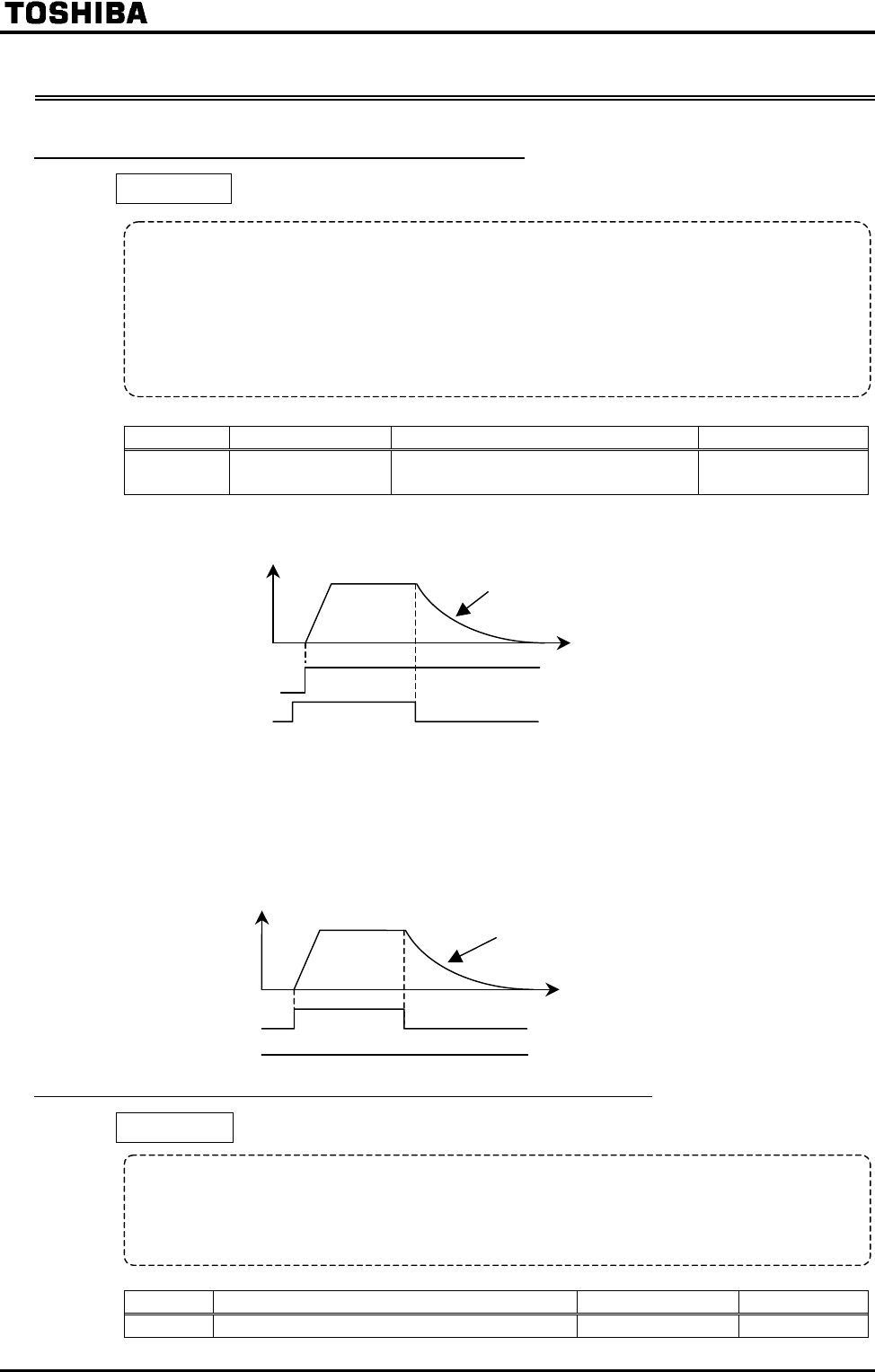
F-3
6.2 Selection of input signals
6.2.1 Changing standby signal function
ST (standby) signal selection
Parameter setting
Title Function Adjustment range Default setting
ST (standby)
signal selection
: Standard, : Always ON,
: Interlocked with F/R terminal
1) Standard
2) Always-ON
The inverter is always on standby regardless of the status of the terminal ST. The terminal ST
can be assigned to another function. In this mode, the motor slows down from the set frequency
speed to a stop in the predetermined deceleration time.
3) Interlocked with terminal F (forward)/R (reverse)
F-CC
6.2.2 Priority selection (both F-CC, R-CC are ON)
Priority selection (both F-CC, R-CC is ON)
Parameter setting
Title Function Adjustment range Default setting
Priority selection (both F-CC, R-CC are ON)
:Reverse :Stop
Function
This parameter is used to set the function of the standby signal (ST).
1) Normal setting (Standby if ST and CC are connected (ON), gate OFF if they are disconnected
(OFF) (coast stop)
2) Always ON
3) Interlocked with F/R (Forward/reverse run if F/R and CC are connected, coast stop if they are
disconnected)
F-CC
ON
OFF
Breaking the connection of the
operation frequency terminal
(F/R) causes the motor to coast
to a stop. (Free-run stop)
Coast stop
Motor speed
Function
This parameter is used to select the operation to which priority is given when F-CC and R-
CC are closed simultaneously.
1
)
Reverse run 2
)
Slowdown sto
p
F-CC
ST-CC
ON
OFF
ON
OFF
Motor speed
Use this setting if a standby
terminal is needed
The inverter is shipped with
terminals ST and CC shorted
with a bar. Remove the
shorting bar when using
these terminals.
Coast stop
ST-CC
OFF
The inverter is shipped with
terminals ST and CC shorted
with a bar. Remove the
shorting bar when using
these terminals.


















